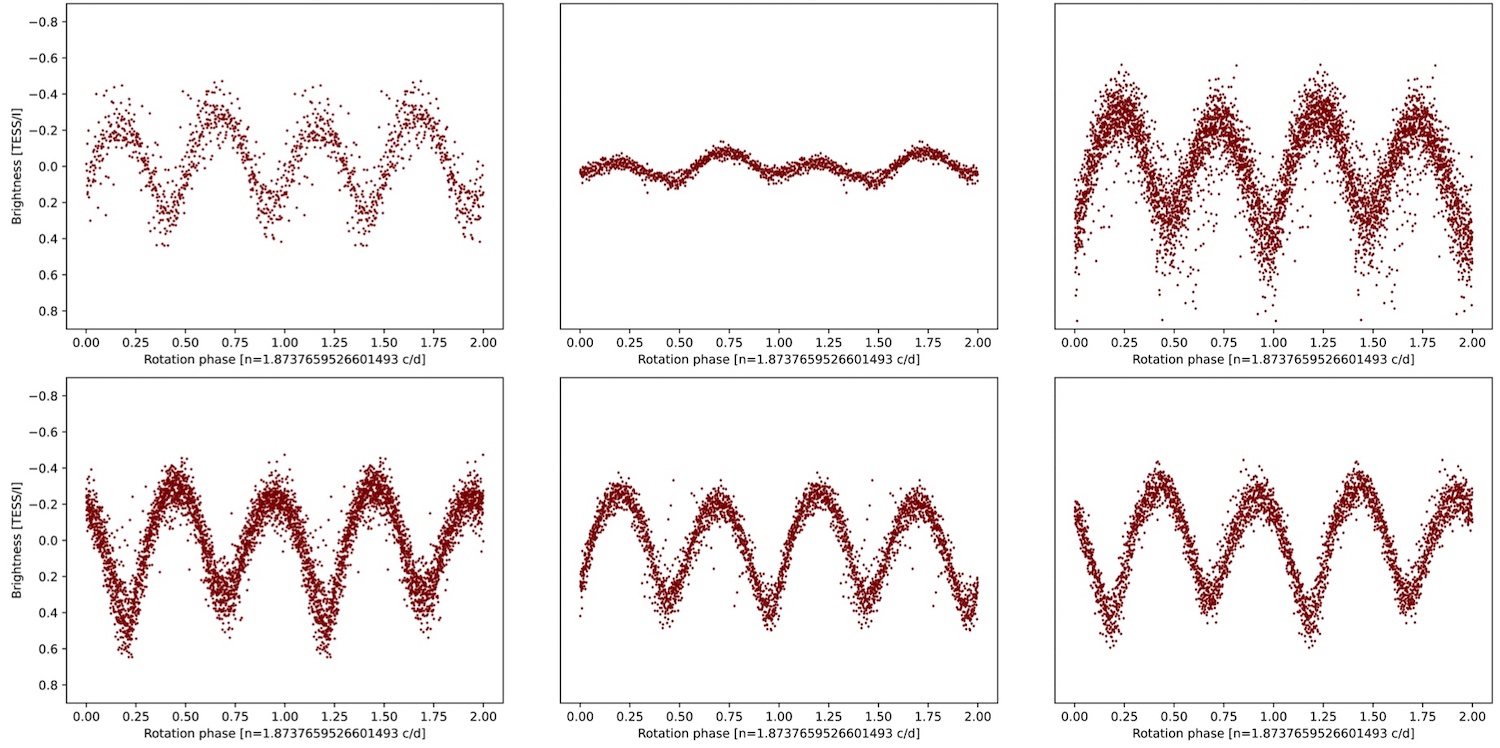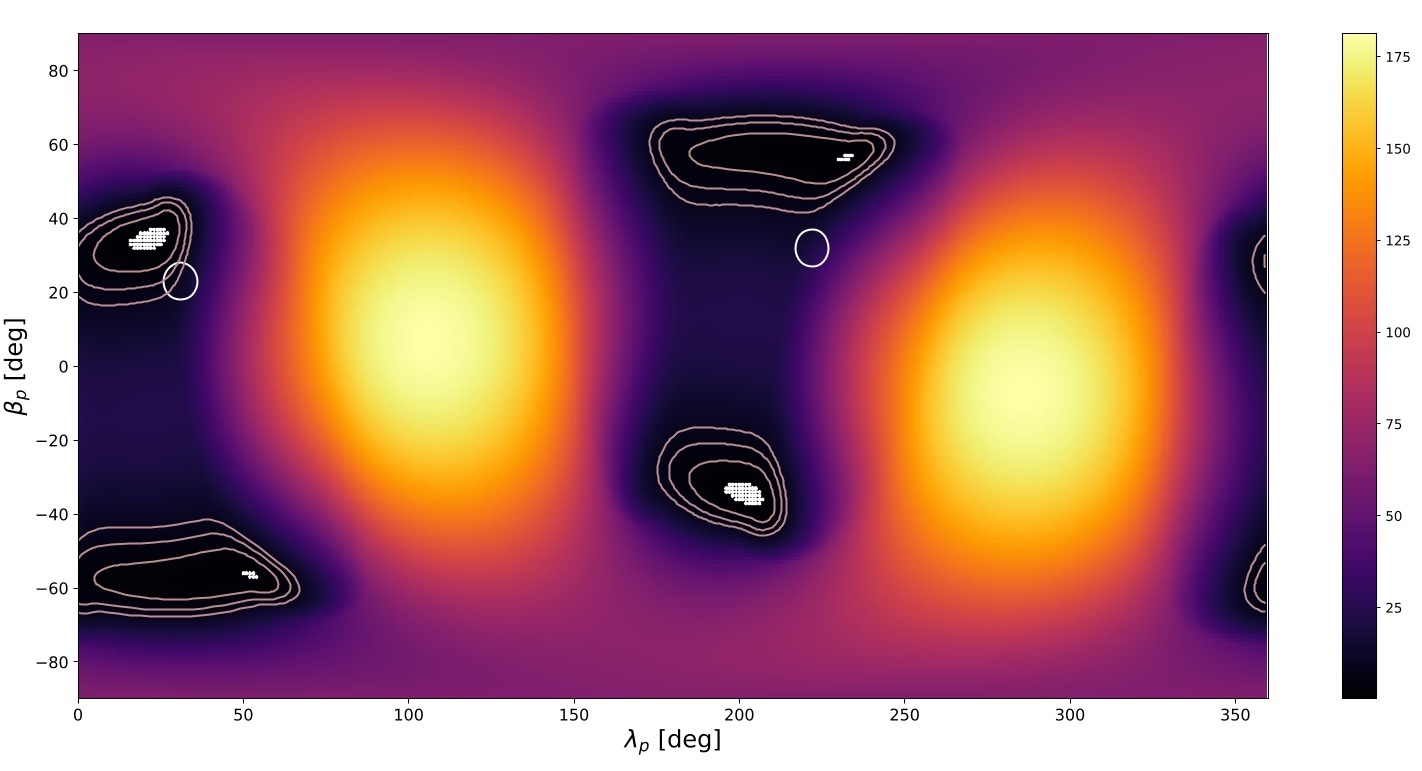- 1Konkoly Observatory, Research Center for Astronomy and Earth Sciences, Konkoly Thege 15-17, H-1121 Budapest, Hungary
- 2CSFK, MTA Centre of Excellence, Budapest, Konkoly Thege Miklós út 15-17., H-1121, Hungary
- 3ELTE Eötvös Loránd University, Faculty of Science, Pázmány P. s. 1/A, H-1171 Budapest, Hungary
- 4ELTE Eötvös Loránd University, Institute of Physics, Budapest, Hungary
Using multi-directional measurements of the Transiting Exoplanet Survey Satellite we have been able to perform analysis on small bodies in the Solar System. In order to validate a purely TESS-based shape and spin-axis reconstruction modelling we determined the spin axis of about forty objects, selected from our large light curve sample. We chose those targets that had been measured in at least three TESS sectors and showed an amplitude variation large enough to constraint the direction of the spin axis. In our simple model the asteroid's shape is approximated with a triaxial ellipsoid, rotating around its shortest axis, with a fixed spin axis direction. Seen from different directions, the light curves and amplitudes would also be different, and we minimize the difference between the predicted and measured amplitudes to obtain the best fitting spin axis direction (lambda_p, beta_p) and shape parameters. Our spin axis solutions are compared to those in the DAMIT database which are based on multi-epoch, mainly ground-based observations. This benchmark study will indicate the capabilities in obtaining shape and spin axis solutions from large surveys. Extracting this information for several such asteroids we can obtain shape and spin axis direction distributions which will be used to infer the formation and dynamics of the asteroid belt using formation and collisional evolution models, for a significantly larger number of targets then before, and using high quality light curve data.

Figure 1: Light curves of the asteroid (4717) Kaneko observed in six different sectors of TESS

Figure 2: χ2 contours obtained from the comparision of observed and predicted light curve amplitudes for (4717) Kaneko. The lowest contours represent our best fitting spin axis solutions in ecliptic coordinates. Circles mark the spin axis solutions provided by DAMIT.
How to cite: Nóra, T., Pál, A., and Kiss, C.: Spin-axis and rotation of small bodies using multi-directional measurements of the Transiting Exoplanet Survey Satellite, Europlanet Science Congress 2022, Granada, Spain, 18–23 Sep 2022, EPSC2022-1225, https://doi.org/10.5194/epsc2022-1225, 2022.

